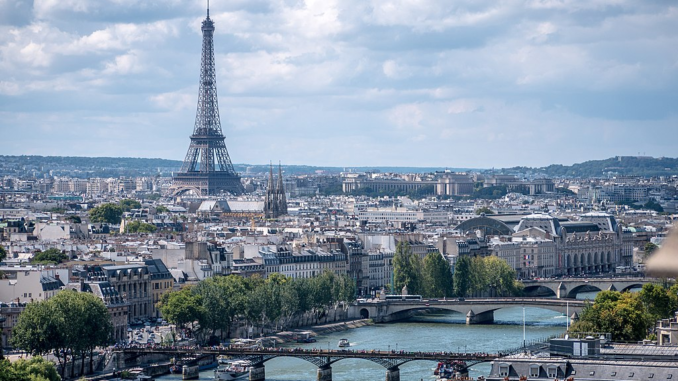
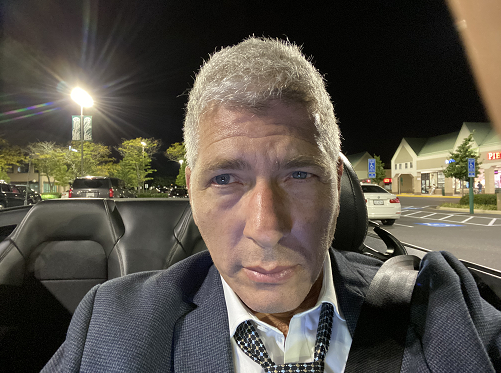
People either love Paris or are disappointed in Paris.
A lot depends on what you’re expecting, what you experience, and for how long you are there.
It is important if you are traveling to Paris, to note beforehand that Paris is:
- The City of Lights.
- The City of Revolution.
- The City of Outdoor Cafe’s.
- The City of Great Restaurants and Food.
- The City of Love.
- The City of Enlightenment — where great artists flocked. Where great writers flocked.
It all depends on the time period and your frame of mind.
- Paris was the headquarters of the Lost Generation, young people and artists disenfranchised and disillusioned with the world after World War I.
- Paris was the scene of the French New Wave movies of the late 1950’s/early 1960’s — the films of Jean Luc-Goddard and others.
- Paris was the backdrop of “Midnight in Paris”, the delightful Woody Allen movie that so cleverly wrapped up some of the above.
You don’t need to know any of the above (or below) to enjoy Paris — but it helps. More than any other town, having a knowledge of what went on here can really enrich your experience, even if you are bumbling around as an Ignorant Traveler.
Here are things to know and do in Paris:
1. Know the Lay of the Land: the Seine & Its Islands
The first thing to do in Paris is to get a handle on the lay of the land. In your mind, you should know where you are globally at all times — which, when you’re in Paris — means you are in Northern France — not so far away from England or Belgium. And even Germany is not that far away (and the Ardennes, where the Panzers broke through).
The major highways encircle the heart of Paris (see map below), and the Seine River cuts through it horizontally, creating a North part (called The Right Bank) and a South part (called The Left Bank).
The Right or Left side of a river is based on looking at the river as it flows downstream towards its eventual destination (either an ocean or a lake).
So in Paris, the Right Bank (Rive Droite in French), refers to the right side of the Seine when you look downstream — as the river heads to the English Channel and Atlantic Ocean. When you do so you will be facing West — the Right Bank happens to be on the North side of the river.
The Left Bank, (Rive Gauche), refers to the left side of the Seine River when you face downstream (or West; it is on the South side of the river).
As you enter Paris from the West, crossing the Seine, you are on Charles de Gaulle Avenue and you pass through the Arc de Triumphe — the French spell it Triomphe.
Here is a video we did that covers this ground:
The Arrondissements of Paris
Paris is divided into 20 different districts — called Arrondissements — numbered 1 thru 20. The Arrondissements were first conjured on 11 October 1795, when Paris was divided into 12 Arrondissements. They were numbered from west to east, spiraling outward from the center of the city, with the Arrondissements 1–9 on the Right Bank of the Seine and the Arrondissements 10–12 on the Left Bank.
Arrondissements 13-20 were added in 1860, when Napoleon III increased the size of the city to include some towns and villages that were previously outside the city walls, like Montmartre and Belleville.
But in 2020, the 4 smallest Arrondissements (#1 thru #4) were consolidated into one new district called Paris Central, so now there are officially 17 Arrondissements.
The Arrondissement Knicknames = The Neighborhoods
Arrondissements are like neighborhoods — many with their own distinctive flavor; some have knicknames such as The Latin Quarter, Le Marais, Montmartre, etc.
Here’s a map of the original 20 Arrondissements:
The Island in the River Seine in Center of Paris
The River Seine has two islands in the center of Paris (see picture below).
The bigger island is called Ile de la Cite — Notre Dame Cathedral is located on it. The smaller island is Ile de St Louis, a super wealthy island that is the more popular of the two for people to walk around on. There are numerous large walkway bridges to these islands — you will walk onto the island not even knowing you’re on an island — you will just think you crossed to the other side of the Seine.
A closer look at the islands:
2. Stroll Champs-Élysées & the Arc de Triumph
And so the first thing you might want to do if in Paris, is go over to the Arc de Triumph and stand under it and touch it. That’s the 1st thing the Germans did when they invaded Paris; why not you?
Once you’ve done that you can walk down the Champs-Elysees — the main drag on which there are so many fashionable stores and lots of lights. All of the trees that are planted on the sidewalks on both sides of Champs-Elysees are lit up with lights.
As an ignorant traveler, you might think, “is this why they call Paris the City of Lights?” And the answer would be “no” — that has to do with Paris being the city of enlightenment in the 1700’s and also the first city to put lights all over the place (candle lights and so forth) in the late 1700’s to dissuade rampant thievery and muggings that were going on at that time.
3. Frequent a Cafe that Great Artists Frequented
Paris is known for its cafe’s — especially the ones where people sit outside on the sidewalk — a sidewalk cafe. The cafes are where the great artists mingled. A brief history of the Paris cafe scene:
The Golden Age of Paris — Late 1800’s
The Golden Age of Paris — Belle Époque — was “The Beautiful Era” of French and European history from 1870’s to 1914 (the beginning of World War I). It was a period of optimism, peace, prosperity, colonial expansion, and technological, scientific and cultural innovations.
The art world had new paint technology, a catalyst for new painting techniques. With the new technology of the photograph threatening to make artists irrelevant, the movement toward Impressionism began in Paris, led by Claude Monet, Amedeo Modigliani, Vincent Van Gogh (who spent 2 of his most formative years in Paris), Edgar Degas, Camille Pissarro, and others.
Auguste Rodin became world-renowned for his sculptures, such as The Thinking Man.
In writing, Paris was the center of the Romanticism movement, with writers such as Victor Hugo and Alexandre Dumas.
The Lost Generation — 1920s-1930s Paris Art & Writing Scene
The artists stood back and took all the insanity of The Great War in, and gave birth to Da-Da-ism. That led to the surrealist movement, driven by Jean Cocteau, Salvador Dali, Man Ray, Georges Braque, and Pablo Picasso, and again all centered in Paris.
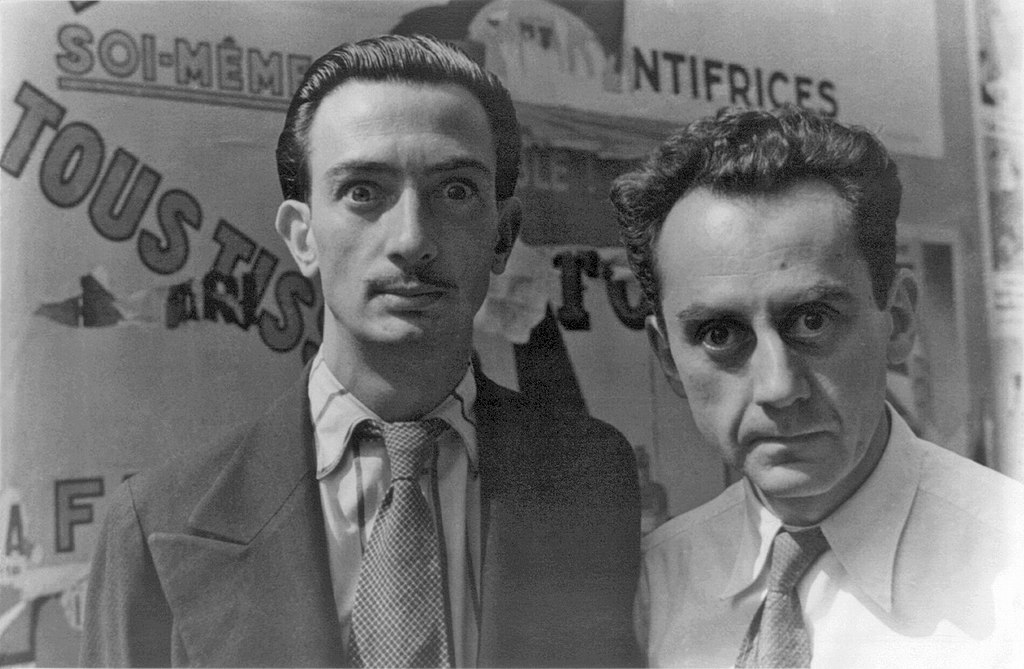
In writing, Ernest Hemingway, in his 1926 novel The Sun Also Rises, wrote “You are all a lost generation.” That term became coined to refer to the entire generation of young people torn apart mentally and physically by The Great War, “disoriented, wandering, directionless”– their spirits crushed.
The “Lost Generation” term was also used to refer to the group of American expatriate writers who flocked to Paris during the 1920s thru 1930s: Hemmingway, Henry Miller, F Scott Fitzgerald and his wife Zelda Fitzgerald, Gertrude Stein (who is credited with coining the term), and others.
Henry Miller, who was born and grew up in NYC — LOVED Paris, and hated NYC. He spent his ‘red letter’ days in Paris — in the early 1930’s writing books that would make him famous, such as Black Spring and Tropic of Cancer.
There were others on the Paris scene: filmmaker Luis Buñuel and bullfighter Juan Belmonte for example. Paris was the scene to be seen.
French New Wave
Paris was the backdrop of the French New Wave of movies in the 1950’s/early 1960’s — the films of Jean Luc-Goddard and others. By that time expats like Jack Kerouac were hitting Paris, joining the likes of Henry Miller and others. Ye-Ye (Yeah Yeah!) female singers such as Francoise Hardy and Chantal Goya became stars on the Paris scene.
The Cafe’s
With that as the background, here are the cafe’s:
Le Dôme — 108 boulevard du Montparnasse. Opened in 1898. It is said to be one of the first meeting places for the writers of the Lost Generation — Hemingway and Ezra Pound were regulars here, as was Henry Miller. This is the cafe you often see representing Paris, photographed with people sitting outside. Everyone had a cup of coffee here — some more than others — check out the wikipedia page for a list; Ernest Hemingway, Samuel Beckett, Henry Miller, Pablo Picasso, Esra Pound and TS Elliot, Man Ray, and on and on.
Les Deux Magots — Located in the Latin Quarter, just southwest of the islands (see map above). Known as a hangout for the likes of Jean-Paul Sartre and Simone de Beauvoir.
Café de Flore — A few blocks to the west of The Latin Quarter, it’s been a favorite spot for famous writers and artists like Georges Bataille, Robert Desnos, and Pablo Picasso.
3. Enjoy a Great French Restaurant
Paris is known for its food and great restaurants.
Le Marais Area
If you are looking for an enchanting old restaurant in an old part of town with good food and relatively modest prices, you might try the Le Marais area, which is in the center of Paris just north of the two islands that Paris has in the Seine. Le Marais is known for its cobblestone streets, historic spots and quirky boutiques. I ate at a restaurant here with coworkers — and the meal was fantastic and I can’t remember the name of the restaurant.
Boubalé Restaurant — 6 Rue des Archives in Le Marais area. At this writing, this restaurant tops the favorite restaurant list of the website I Prefer Paris!, run by a native-born New Yorker living in Paris.
Latin Quarter Area
The Latin Quarter area is just south of the two islands that Paris has in the Seine (see map above). It also has some terrific restaurants.
The Famous Restaurants
Paris has its share of famed restaurants. Here are some:
Restaurant Polidor — rue Monsieur le Prince in the Latin Quarter (see above). The Polidor has been open since 1845.
You are transported back in time the second you cross the curtain into the dining room. Hemingway, Paul Verlaine, André Gide, James Joyce, Antonin Artaud and beat poet Jack Kerouac all frequented this restaurant. It was used to film a scene in the Woody Allen movie, “Midnight in Paris”, where the central character, Gil, meets Ernest Hemingway to discuss Gil’s book.
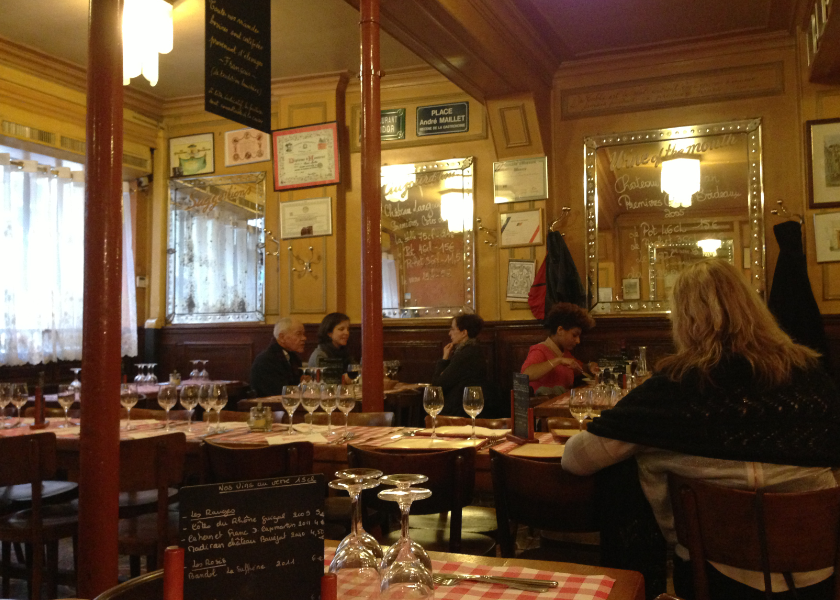
Le Grande Véfour — 17 Rue du Beaujolais near the Le Marais area (see above). This restaurant opened in 1784. Some of its most famous customers have plaques marking their favorite tables – including Napoleon, philosopher Jean Paul Sartre, writers Colette and Victor Hugo, and surrealist Jean Cocteau.
La Closerie des Lilas — 171 Blvd du Montparnasse. Opened in 1847, Deep in the Latin Quarter, this restaurant opened in 1847. It was a favorite hangout of Hemingway and Émile Zola amongst others.
Restaurant Paul — 15 Place Dauphine. Restaurant Paul is located on Ile de la Cite, on the western tip in an area called Place Dauphine. The restaurant was founded in the early 1900’s. Back then it was named “Au rendez-vous des Cochets”, which means “a meeting place for artists and intellectuals”. The restaurant exchanged hands several times in the 1920s and 1930s before taking its current name. French film stars Yves Montand and Simone Signoret, who had a well-known affair in the 1950’s, were regulars at the restaurant; they happened to live in an apartment above it. However, according to the website I Prefer Paris!, Restaurant Paul is rated as overpriced with so-so food.
Maxim’s — located at 3 rue Royale on the North Bank. Founded in 1893 it became one of the fashionable restaurants in Paris in the late 1800’s. In the early 1900’s, new owner Eugene Cornuche redecorated the dining room with Art Nouveau decor, installed a piano, and made sure that it was always filled with beautiful women. It became known for this — in 1913, surrealist artist Jean Cocteau said of Maxim’s clientele: “It was an accumulation of velvet, lace, ribbons, diamonds and what all else I couldn’t describe. To undress one of these women is like an outing that calls for three weeks’ advance notice, it’s like moving house.” Scenes for the 1958 musical Gigi were filmed here.
4. Take In a Famous Paris Nightclub or Cabaret
The Moulin Rouge, 82 Boulevard de Clichy, at Place Blanche in the northwest area of central Paris (take the Metro to Blanche) — Founded in 1889, the Moulin Rouge was the famed cabaret where the can-can dance became popular at the end of the 19th century. It was frequented by famed artists of The Golden Age of Paris, such as Henri de Toulouse-Lautrec, Paul Gauguin, and Edgar Degas. You can buy tickets and take in a show.
Le Grand Duc — located at 52 rue Pigalle also in the northwest area of central Paris near The Moulin Rouge. The name translates to the Great Duke, it was Eugene Bullard’s first nightclub, acquired in 1924 and became a hot nightclub that catered to the growing love Europe had of American black jazz. Ernest Hemingway used to frequent the nightclub, and it is said that he based the character, Jake Barnes, in ‘The Sun Also Rises’ partly on Eugene Bullard. Langston Hughes worked as a dishwasher and waiter at the nightclub before he moved to New York to do poetry. F. Scott Fitzgerald and Josephine Baker were also regular visitors. The singer and dancer Bricktop (Ada Smith) ran famed nightclub.
Bricktop’s — located at 66 rue Pigalle, a few doors down from Le Grand Duc (above). In 1929, singer/dancer Bricktop (aka Ada Smith), who managed Le Grand Duc, opened her own nightclub, which also became a hot spot for American Jazz.
5. Have an Ice Cream at Berthillon in Ile Saint Louis
As mentioned above, Ile Saint Louis is one of the two islands in the middle of Paris on the Seine. You may walk through Ile Saint Louis not even knowing you are walking through an island — thinking you are just crossing the Seine to the other side, and then confusingly crossing the Seine again later on.
Here is a good video that gives you the feel of walking through Ile Saint Louis, with destination Berthillon — a popular ice cream shop:
6. See the Underbelly of the City of Light
I had two nights free in Paris — on one I was with a group of coworkers, on the 2nd I was on my own. For the night on my own, I had a mission: to distribute our Paperbacknovel.com newsletter to bookstores and the like in Paris — places that allowed you to put down free reading material.
This allowed me to prowl the underbelly of the city of light. Look at the town from a different perspective — where can I place free literature?
Not many places, I discovered.
But I did run into a number of interesting joints — some famous, some not so famous.
Shakespeare & Company Books
One was Shakespeare and Company bookstore on 37 rue de la Bûcherie — on the Left Bank (South side) right near the River Seine by the islands.
This bookstore is a must visit.
This famous English language bookstore was founded in 1951 by American George Whitman, with original name of bookstore being Le Mistral, and later changed to Shakespeare and Company bookstore by Whitman in 1964, on the 400th anniversary of Shakespeare’s birth.
According to the bookstore’s website, Whitman had a second reason for renaming the bookstore — it was to honor Sylvia Beach, who founded the original Shakespeare and Company in 1919. That store at 12 rue de l’Odéon was a gathering place for the great expat writers of the time: Hemingway, Stein, Fitzgerald, Eliot, Pound, and James Joyce — as well as for leading French writers.
Whitman’s Shakespeare & Co bookstore soon became a center for expat literary life in Paris in the 1960’s. According to the bookstore’s website, writers such as Allen Ginsberg, William Burroughs, Anaïs Nin, Richard Wright, William Styron, Julio Cortázar, Henry Miller, William Saroyan, Lawrence Durrell, James Jones, and James Baldwin were among early visitors to the shop.
*No Relation to NYC Shakespeare & Co Bookstore(s)
Note that this bookstore has no relation to the Shakespeare & Company bookstore(s) of NYC, which were founded in the 1980’s. There was a Shakespeare & Company bookstore on Broadway in NYC on at Washington Place that lost its lease in 2014, and then there is a Shakespeare & Co bookstore on the upper East side of NYC by Hunter College that is now expanding as a chain bookstore across America, including a new location in Philadelphia.
San Francisco Books
Another was San Francisco Books, in the Latin Quarter (Left Bank) — it is an English Language bookstore stuffed with books like a good bookstore should be.
*Note that there are no San Francisco bookstores in NYC, or in San Francisco — although there are bookstores in San Francisco.
The Paris Flea Market — aka Marché aux Puces de Saint-Ouen, Le Marché Paul Bert — is to the north of the city, just outside the center of Paris area (specific address: 96-110 rue des Rosiers). You can get to it on the Metro, getting off at the Porte de Clignancourt station. The flea market has many shops that offer up everything from cheap junk, to African art, to modern art and antiques.
The flea market was a location in the Woody Allen movie Midnight in Paris, where the central character Gil bumps into the girl of his dreams Gabrielle, looking for a Cole Porter record.
7. Sit by the Left Bank of the River Seine
As mentioned above, the River Seine splits Paris in two horizontally (see maps above) so Right Bank and Left Bank become important — the Right Bank is everything on the North side of the river; the Left Bank is everything south.
The River Seine has been in many movies but the one that to me is most memorable is “What’s New Pussycat”, with Peter Sellers and Woody Allen (written by Woody but directed by Clive Donner — Woody felt that Donner messed up the jokes so badly that after this Allen directed all his own movies). The scene is filmed by the bridge right next to the Eiffel Tower — the bridge is called Pont d’Iena.
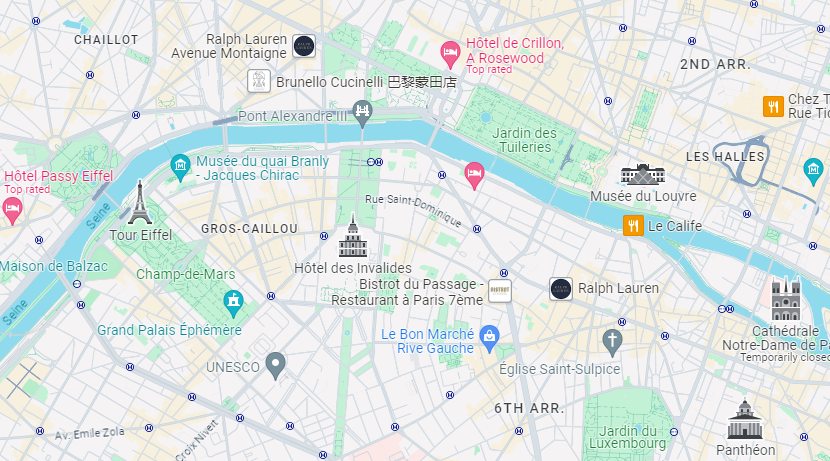
7. Touch the Eiffel Tower
The Eiffel Tower is on the Western side of the center of Paris, near the River Seine on its Left Bank (South bank). You can walk in the gardens around and under the Eiffel Tower for free. To enter the Eiffel Tower, you must buy a ticket — cost at this writing is 18 Euros.
8. Stop by Notre Dame
Notre Dame is a medieval Catholic cathedral on the Ile de la Cite (one of the two islands in the Seine River in the center of Paris, see above).
It’s actual name is Notre-Dame de Paris — which translates to ‘Our Lady of Paris’.
It is a must see, and its right there in the center of town.
9. Visit the Louvre & Hotel Biron
The Louvre museum is in a palace that is home to some of the world’s most iconic paintings, sculptures, architectural elements, and art objects — including The Mona Lisa and Venus de Milo.
The Louvre is located on the Right Bank (North side) of the Seine right near the islands in the center of Paris.
Hotel Biron is at 79 rue de Varenne, in the Left Bank near the Eiffel Tower. Don’t try to book a room at the Hotel Biron — it is actually a museum. It was Auguste Rodin‘s home from 1911 to his death in 1917. He bequeathed his artworks to the nation on condition they be exhibited at the hotel. There’s an admission charge for the museum. You can also tour the gardens of the hotel for 1 Euro at current writing. There are numerous casts of Rodin’s famous The Thinker sculpture throughout the world — a large one created in 1906 is located in the gardens.
10. Take the Subway, or ‘Metro’
The Paris people are super friendly and helpful, especially when you are asking questions about how to use the Metro. Ask people a question and they will often go out of their way to help you — especially if it means navigating their home city.
The Metro costs just over 2 Euros per ticket at current writing. A ticket allows you to ride anywhere in the Metro system — transferring from line to line if you need to. In the past paper tickets were sold and used — and you needed the ticket when you entered and when you exited — so you needed to keep it handy. You could buy a pack of 10 tickets called a ‘carnet’.
But paper tickets have been phased out starting in 2022 — and now you get a contactless ticket on your phone.
11. Visit Disneyland?
When I visited Paris, I was located in Disneyland as that is where the work conference was being held. Disneyland is 16 miles to the East of the heart of Paris. You can take a city train out to it.
Disneyland is Disneyland — if you are a fan it might be interesting to see the French version. We had the park to ourselves one night so that made it fun — to do the rides with coworkers and have no lines.
12. Where to Stay
Travel websites such as Expedia have the best advice on places to stay based on the reviews and prices. If you are looking to stay where the most famous stayed, then look into:
Hotel le Meurice — 228 Rue de Rivoli at center of the city on the Right Bank (North side of Seine) overlooking the Tuileries park. Dubbed the ‘Hotel of Kings’ – Queen Victoria, Alphonse XIII and the Shah of Iran stayed here — the Shah stayed here while he was being deposed by the Iranian revolution. Tchaikovsky stayed here, as did Pablo Picasso and Salvador Dali. Dali, in fact, spent one month each year at the hotel, and often asked the front desk for crazy requests such as demanding a herd of sheep be sent to his room, or flies caught from the Tuileries park across the way — publicity stunts.
Other Recommended Resources:
I Prefer Paris is a terrific website chock full of native information done by a native-born New Yorker who moved to Paris 20 years ago.
The Oops I Traveled Again youtube channel has some really well-done walking tours of Paris. Here are some:
- Walking through the 7th Arrondissement — the ‘Rich American’ section of Paris
- Eiffel Tower walking tour
- Taking the Metro
- Notre Dame
Interesting reading:
Recommended movies to watch before going to Paris:
- Midnight in Paris – delightful 2011 Woody Allen comedy that has its main character go back in time wherein he meets the famed writers and artists of different eras in Paris. Here’s a scene where the main character meets Salvador Dali, Man Ray, and the filmmaker Luis Bunuel in a cafe.
- Alphaville — filmed in Paris by Jean Luc Goddard and released in 1965. About a totalitarian future run by the ultra rich using Artificial Intelligence computers:

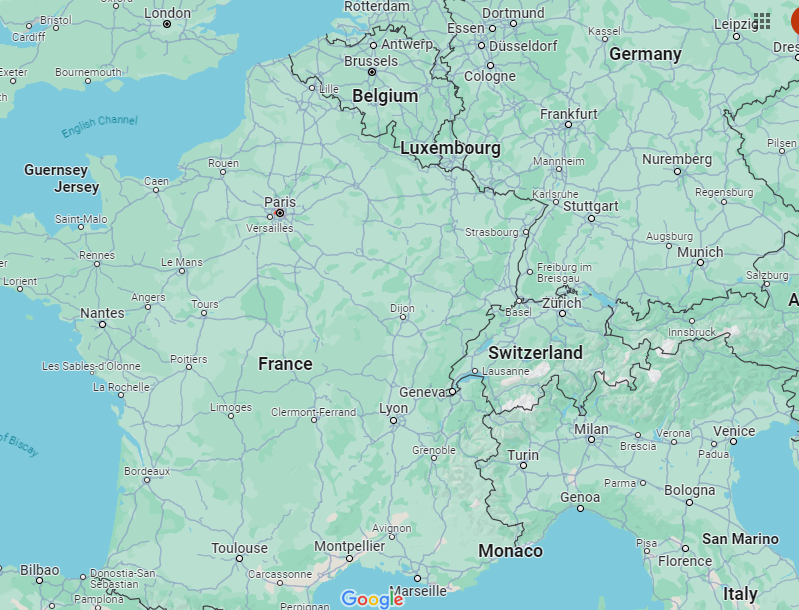
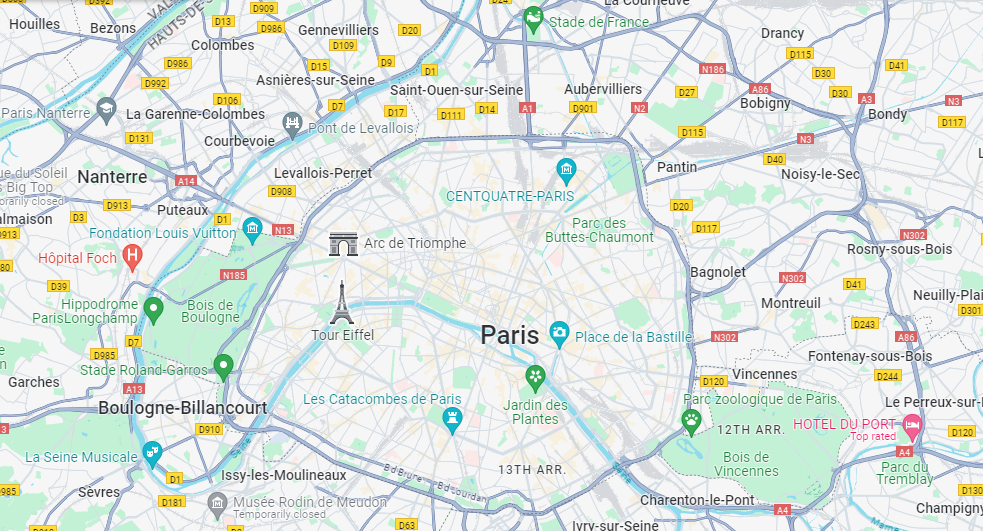
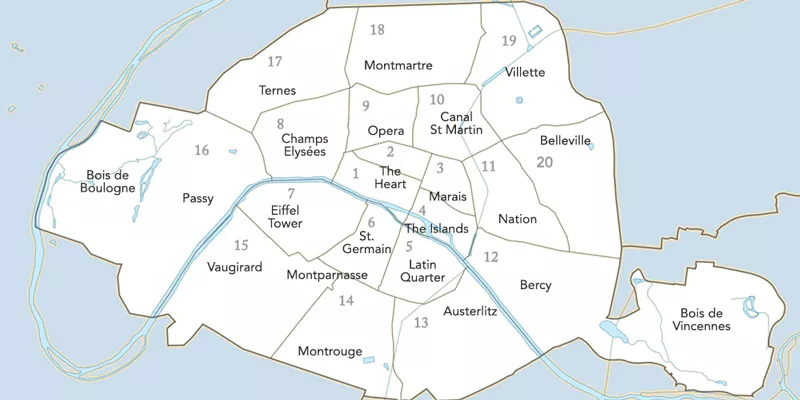

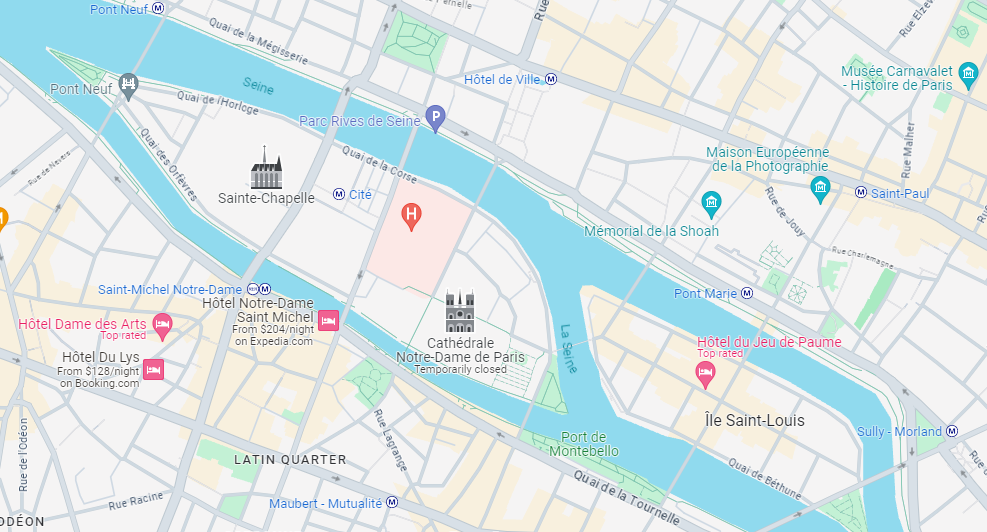
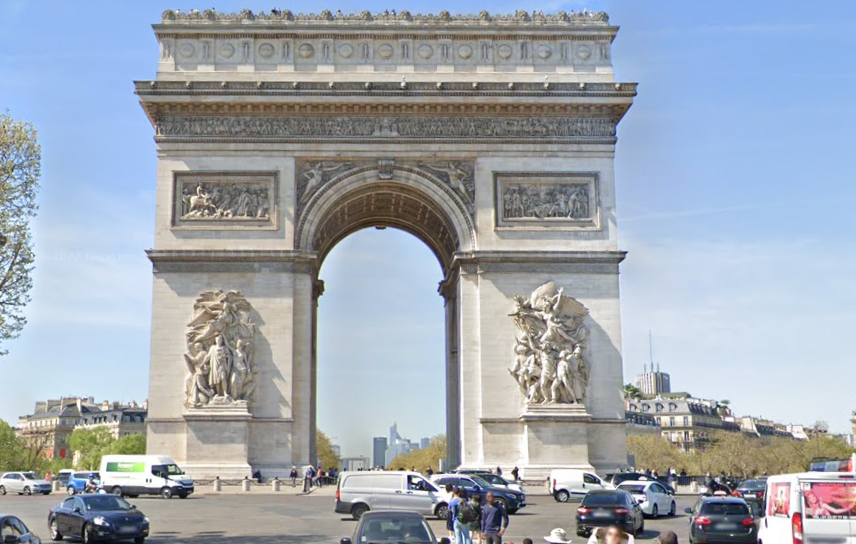

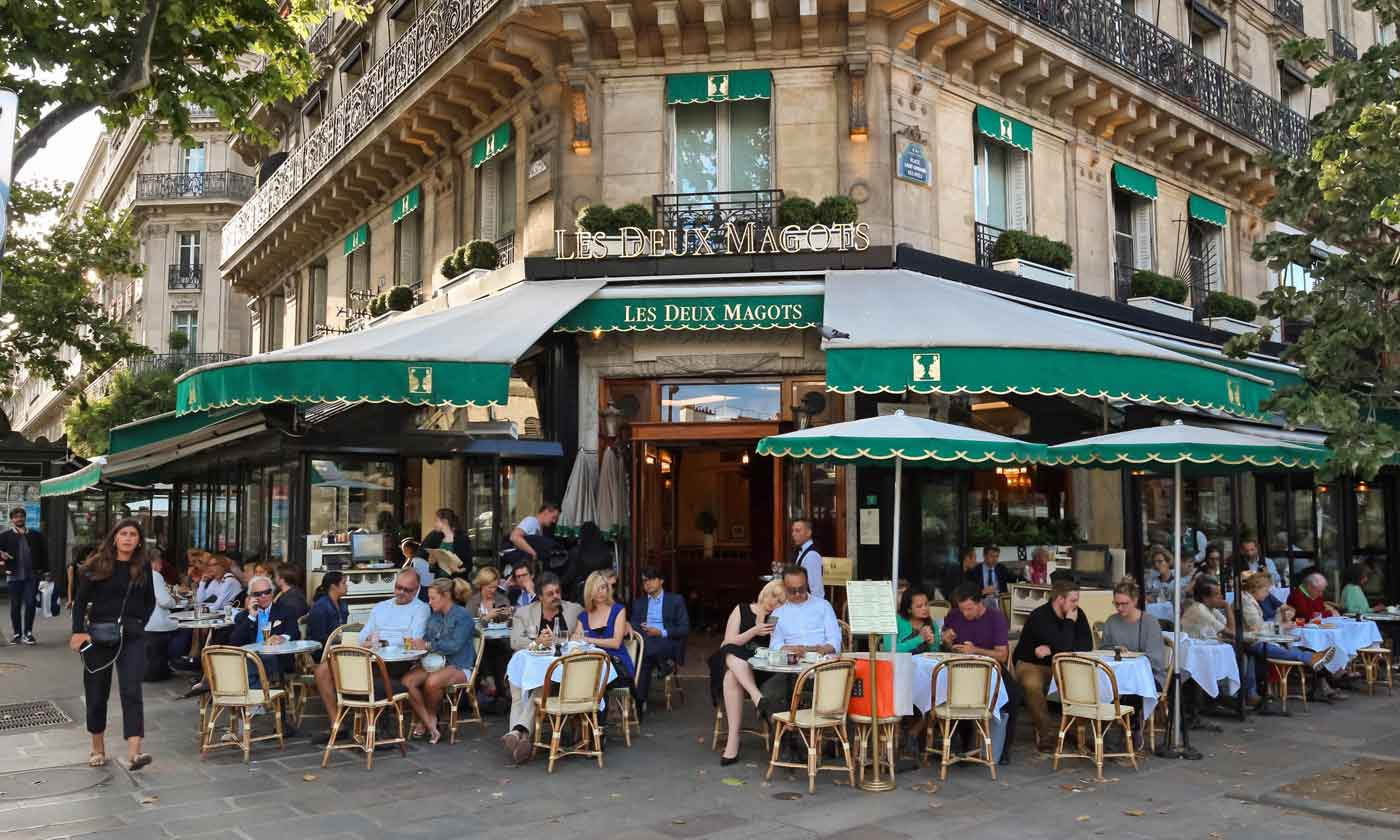
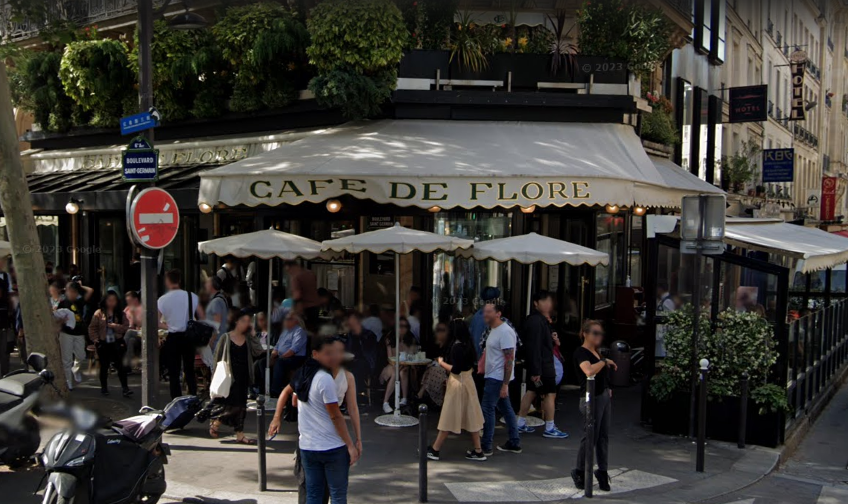

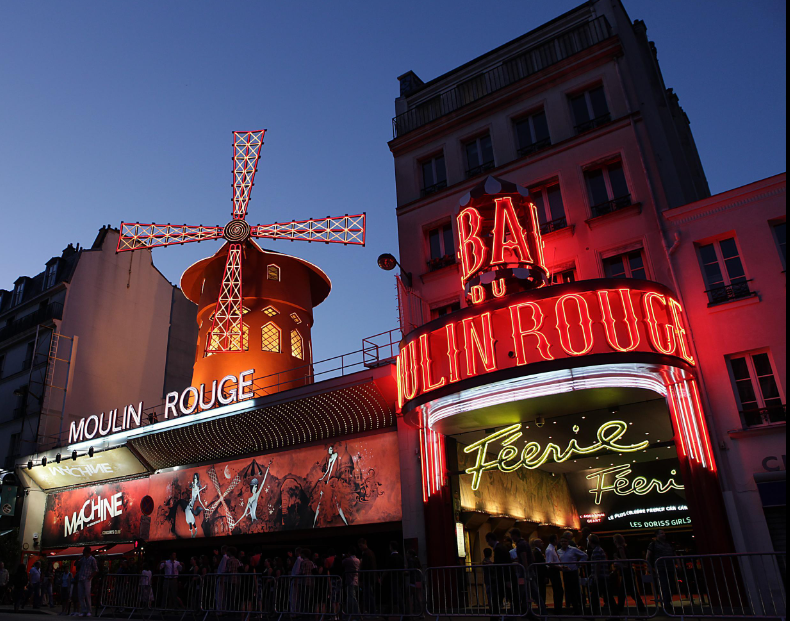
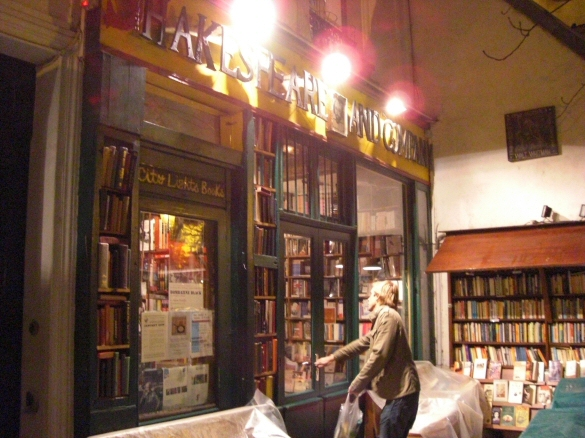
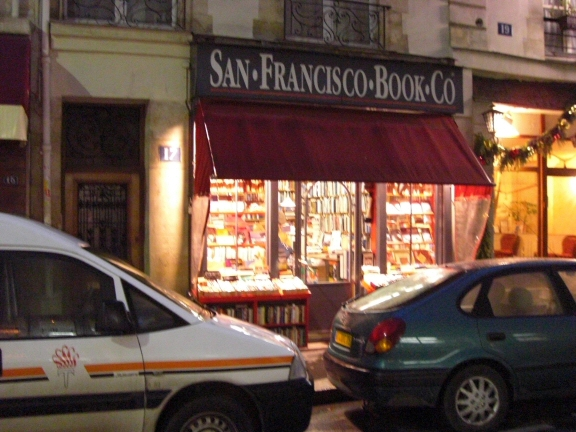


Be the first to comment